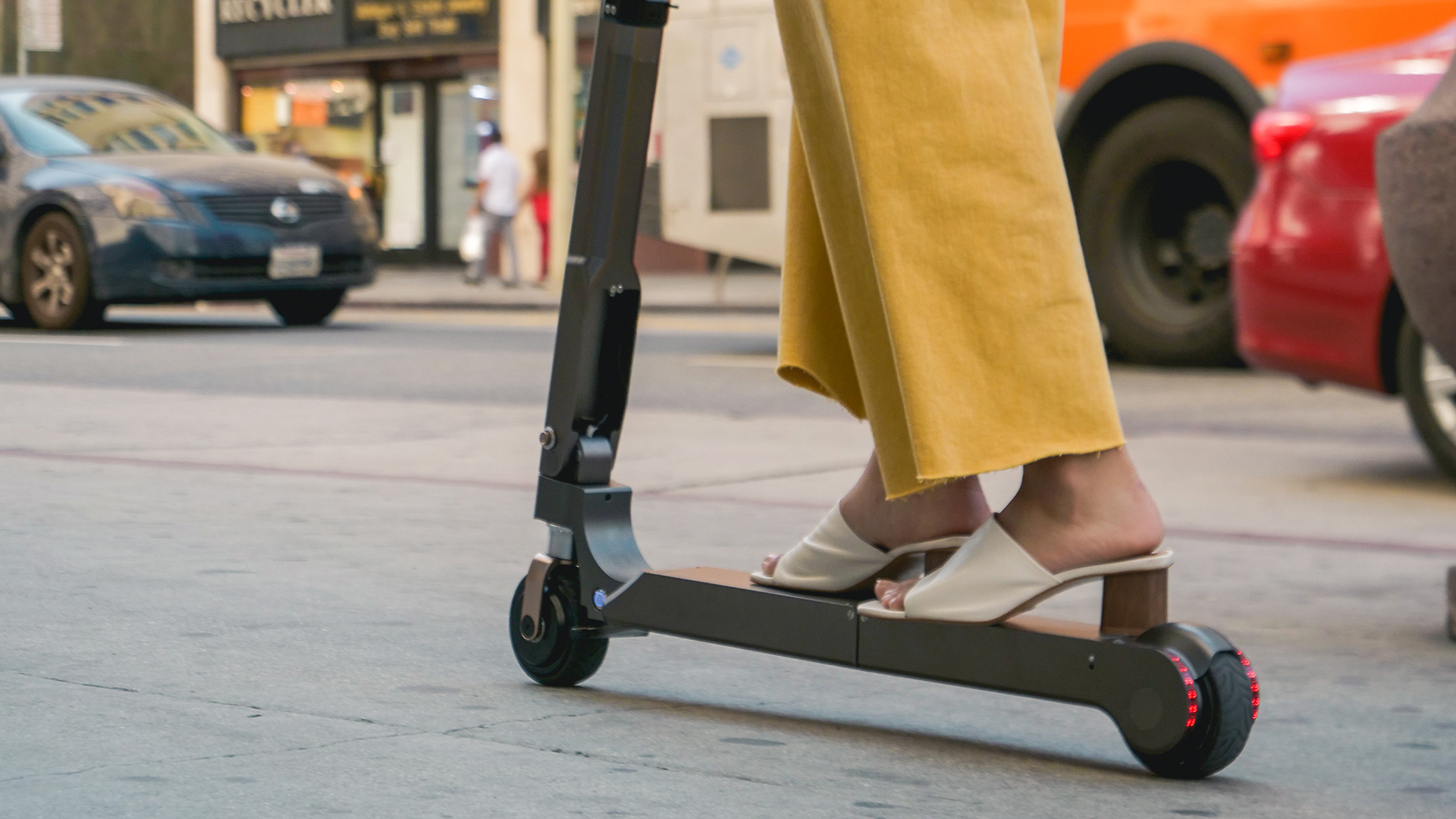
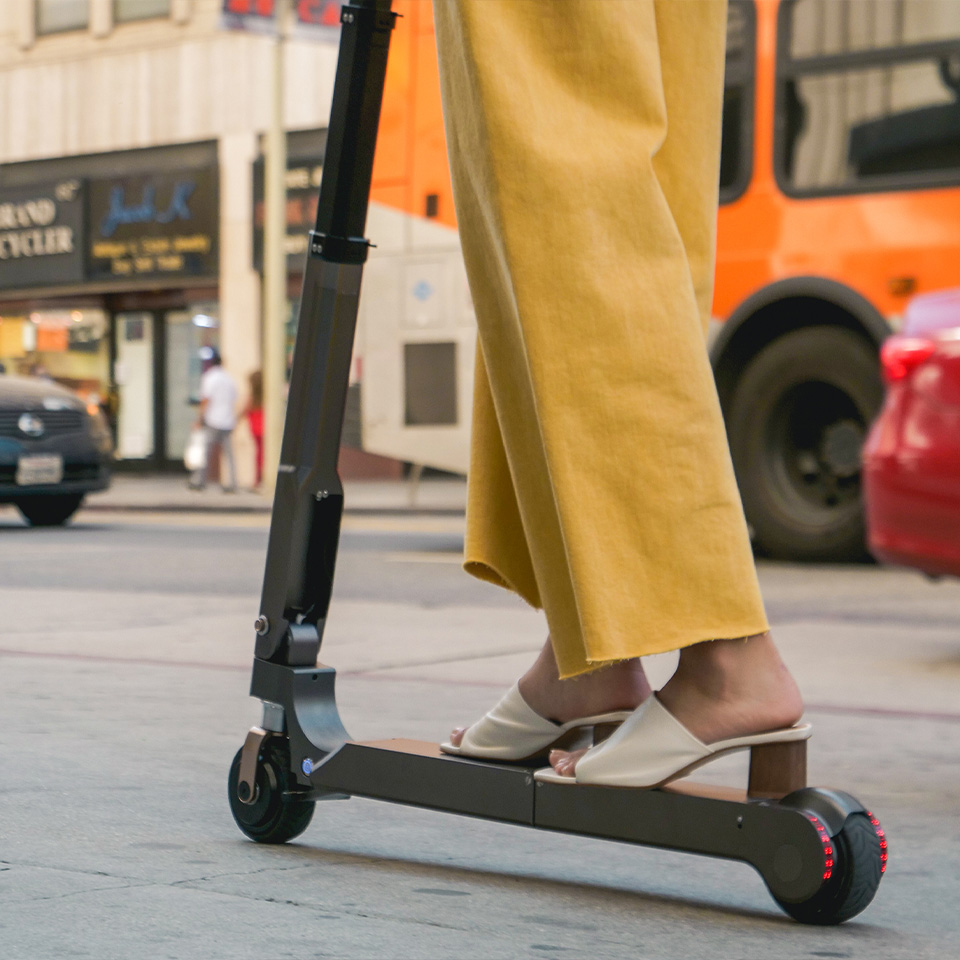


Mobility has constantly evolved throughout time. We built ships to get to new continents, and we developed railroads to connect between continents and made it safer for passengers and cargo to travel. Traveling has become even more convenient as we build airplanes that can travel tens of thousands of kilometers within hours, and cars have become more abundant than ever, making travel easier than ever. It would be safe to say that the freedom of travel that we enjoy now has improved along with the development of mobility.
Mobility in recent years is focusing not only on mid-to-long distance travel but also on improving convenience until you reach the final destination. In this article, [Mobility Trend 1], we will take a look at the last mile mobility that brings us to the last destination.
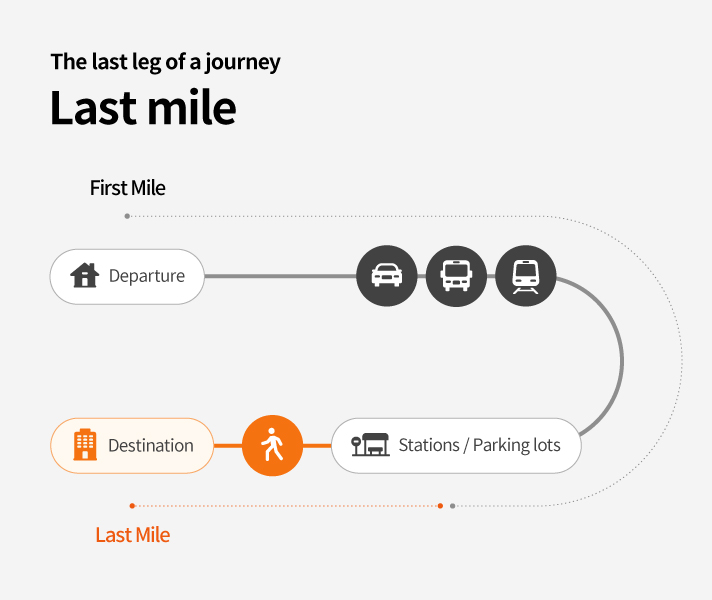
Last Mile is a term used in supply chain management and transportation planning to describe the last leg of a journey comprising the movement of people and goods from a transportation hub to a final destination. For example, when moving from your home (departure) to your office (destination), the travel between your home and your office through public transportation is First Mile, the short distance to your office is Last Mile.
Until now, the most common way for Last Mile has been walking. However, in recent years, various motorized small mobility such as electric bicycles and electric scooters have been developed, and mobility sharing services using these mobilities have emerged; and these definitely replaced walking. 'Last Mile Mobility: For one last mile to the destination' is getting realized.
The reason Last Mile Mobility is drawing attention is related to the emergence of Megacity. As cities become densely populated, traffic congestion is getting worse and parking shortages have occurred, increasing the demand for more convenient means of transportation within the cities. More people are using the Last Mile mobility, which uses batteries such as electric scooters, as their performance and mileage improve, getting more convenient to use.
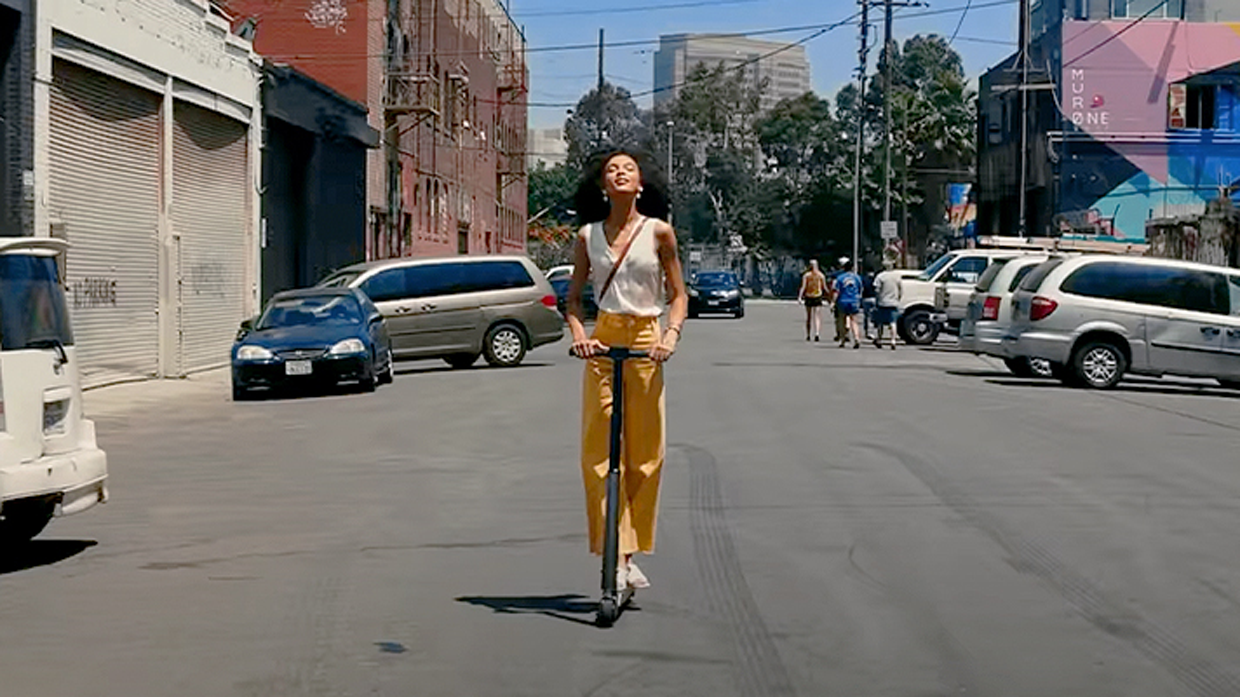
As the demand for last-mile mobility increases, global automakers have started working on the development of micro-mobility such as electric scooters and electric bicycles. Audi introduced a new concept of micro-mobility 'E-tron Scooter' that combines a skateboard and an electric scooter, and General Motors (GM) has broadened its market, not a car, by selling an e-bike from 2019. Volkswagen also unveiled the electric scooter 'City Skater' at the Geneva Motor Show 2018, and BMW is selling the electric scooter 'City Scooter'.
Hyundai Motor Company also unveiled a prototype of the foldable electric scooter in 2019. Hyundai's electric scooter can travel at a maximum speed of 20 km/h using a 10.5 Ah lithium battery, and it can travel approximately 20 km on a single charge. The total weight is only about 7.7kg and its tri-fold design makes it extremely portable.
In addition, Hyundai Motor's electric scooter can be charged directly from an electric vehicle. Mass production is still on its way, but their plan could enable the first mile to be covered by an electric vehicle and the remaining last mile by an electric scooter, which is drawing worldwide attention.
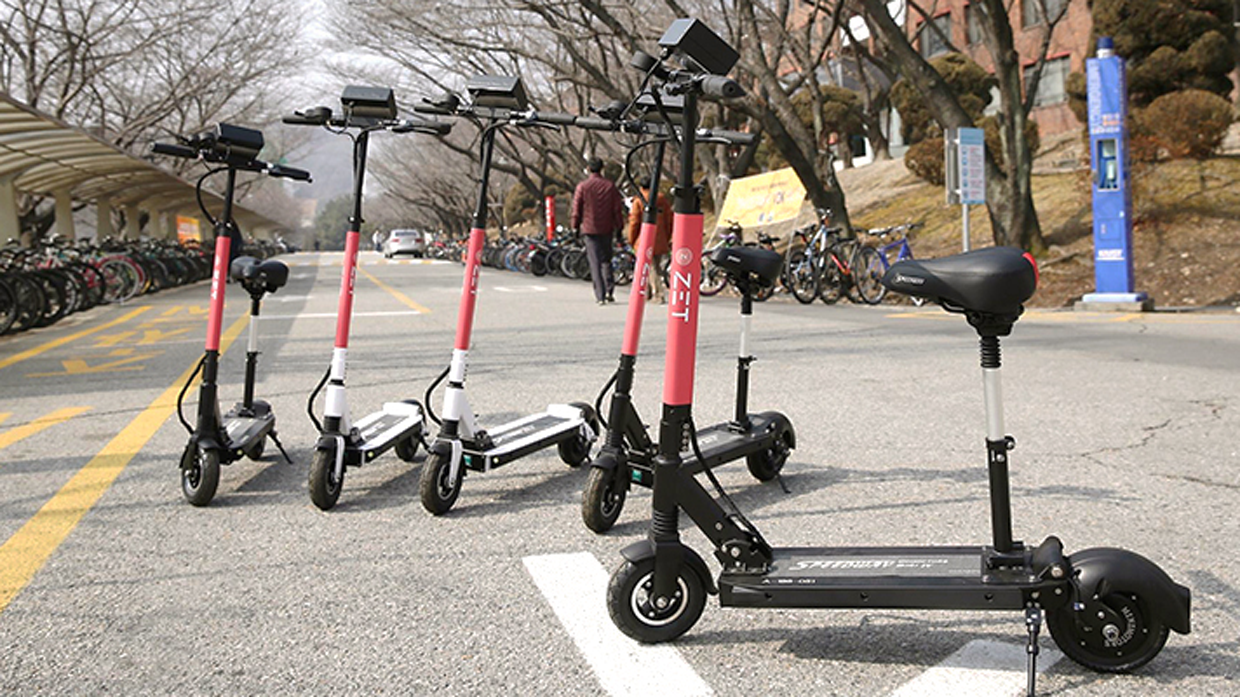
The competitive interest in Last Mile Mobility naturally leads to the development of micro-mobility and services to utilize it. Hyundai Motor Company invested in 'Kick Going', a domestic e-scooter sharing company, and built a last-mile mobility platform, 'ZET', for a pilot operation. In addition, the company is making extensive investments in Grab, the largest mobility sharing company in Southeast Asia, to revitalize last-mile mobility.
Not only global automakers but also IT companies are directly or indirectly working on providing the Shared Mobility for Last Mile delivery service. Google and Uber invested in Lime, an electric scooter share service provider in the US, and Naver also invested in Mass Asia, which provides a last-mile shared mobility service in Korea. According to a study by global consulting firm McKinsey, the last-mile mobility market in China, Europe, and the United States is expected to grow to $500 billion by 2030.
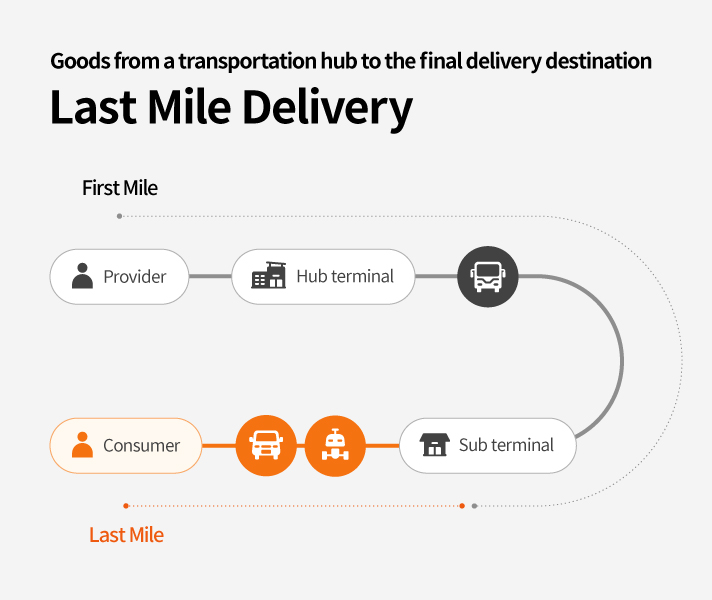
The first mile in logistics covers the area where the goods are sent from the provider, the hub terminal, and the sub terminal. Then, the Last Mile logistics service provider carries goods from the sub terminal to the consumer directly.
The number of online purchases has shown exponential growth, and last-mile mobility has attracted great attention in logistics. Unlike micro-mobility such as electric bicycles and electric scooters, the 'usual' Last Mile mobility, robots are the ones that logistics companies are paying attention to.
Last Mile delivery is important to both consumers and producers. For suppliers, last-mile delivery is labor-intensive that needs a lot of workers, and the cost of labor increases significantly as cargo volume increases; in other words, there still is room for improvement for greater profits. For consumers, improved last-mile delivery service leads to better convenience. As the quality of the last mile delivery service improves, you will be able to get your delivery when you want.
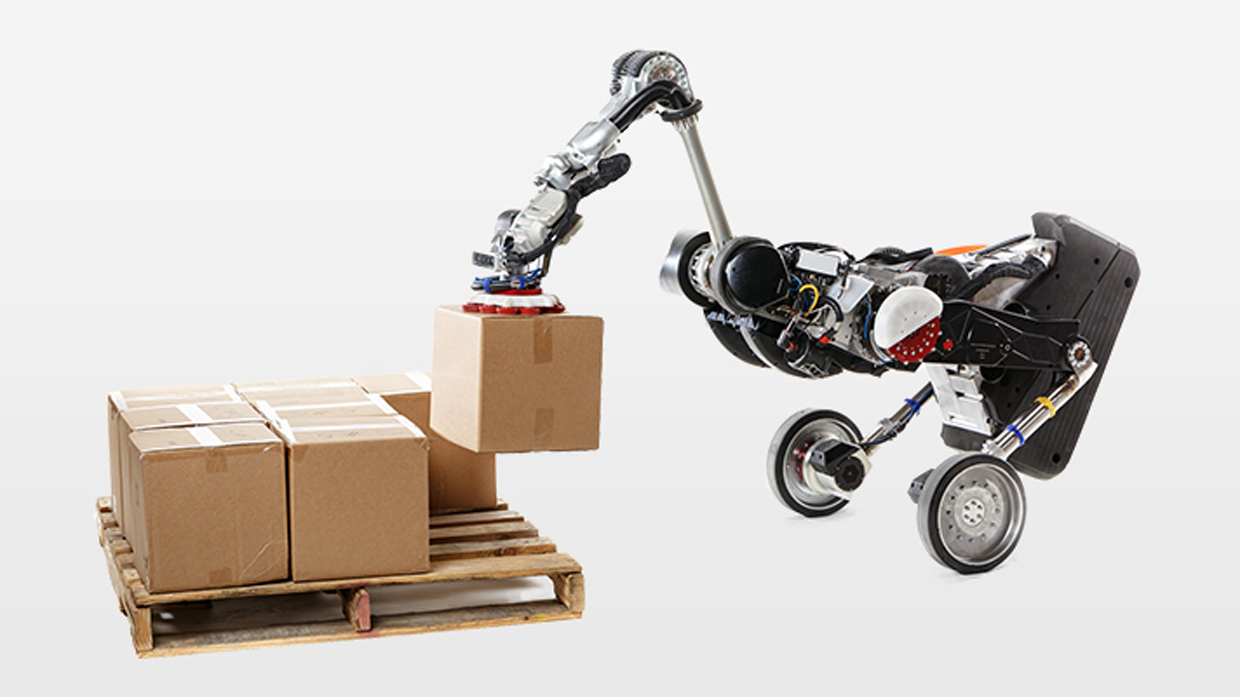
From this perspective, the delivery robot would be the best Last Mile mobility. This is because the delivery cost won't increase no matter how much cargo increases. Besides, 24/7 delivery service would come true. Another advantage of the delivery robot is that it can reduce the cost of misdelivery. In the U.S., a study has shown that robots can save misdelivery costs up to $333 million each year.
The distribution and logistics industries are paying attention to the advantages of robot delivery service and are gradually increasing investments. Amazon introduced the delivery robot 'Scout' and is running a pilot operation in Washington, Georgia, and Tennessee. A Korean startup Kiwi Campus developed KiwiBot and started a food delivery service in the U.S. Woowa Brothers, a delivery service provider well known for the mobile app BAEMIN, unveiled Dilly Z, a delivery robot using autonomous driving technology.
Automakers with autonomous driving technologies, the essential element for delivery robots, are also jumping into robot development for the last mile delivery service. Toyota unveiled 'Micro Palette', a six-wheel-drive robot that delivers goods between autonomous vehicles and customers, at the 2019 Tokyo Motor Show. Ford and Agility Robotics also showcased the robot Digit at the CES 2020.
Hyundai Motor Group decided to acquire Boston Dynamics, a robotics company, to jump into the robotics market. Hyundai Motor Group's direct acquisition of a robot company is to respond quickly to changing mobility environments and its consumption patterns. The value of the mobility industry continues to grow as the Last Mile delivery service market expands.

As always, the mobility industry continues to evolve to keep up with changes. It might seem odd to watch the global automakers that have been manufacturing hundreds of thousands of automobiles annually suddenly developing micro-mobility or working on robotics. But through this, we can see what kind of mobility our society currently requires.
Last Mile Mobility, which is the last leg of a journey, is equipped with an electrification system, and it includes mobility service platforms, robotics, and autonomous driving technology, all of the features of future mobility. The reason global automakers are paying attention to Last Mile Mobility is that it can expand the concept and scope of mobility, and create new services and values regardless of the type.
*[Mobility Trend 2] will take a look at purpose-based mobility (PBV) as a new means of urban mobility.
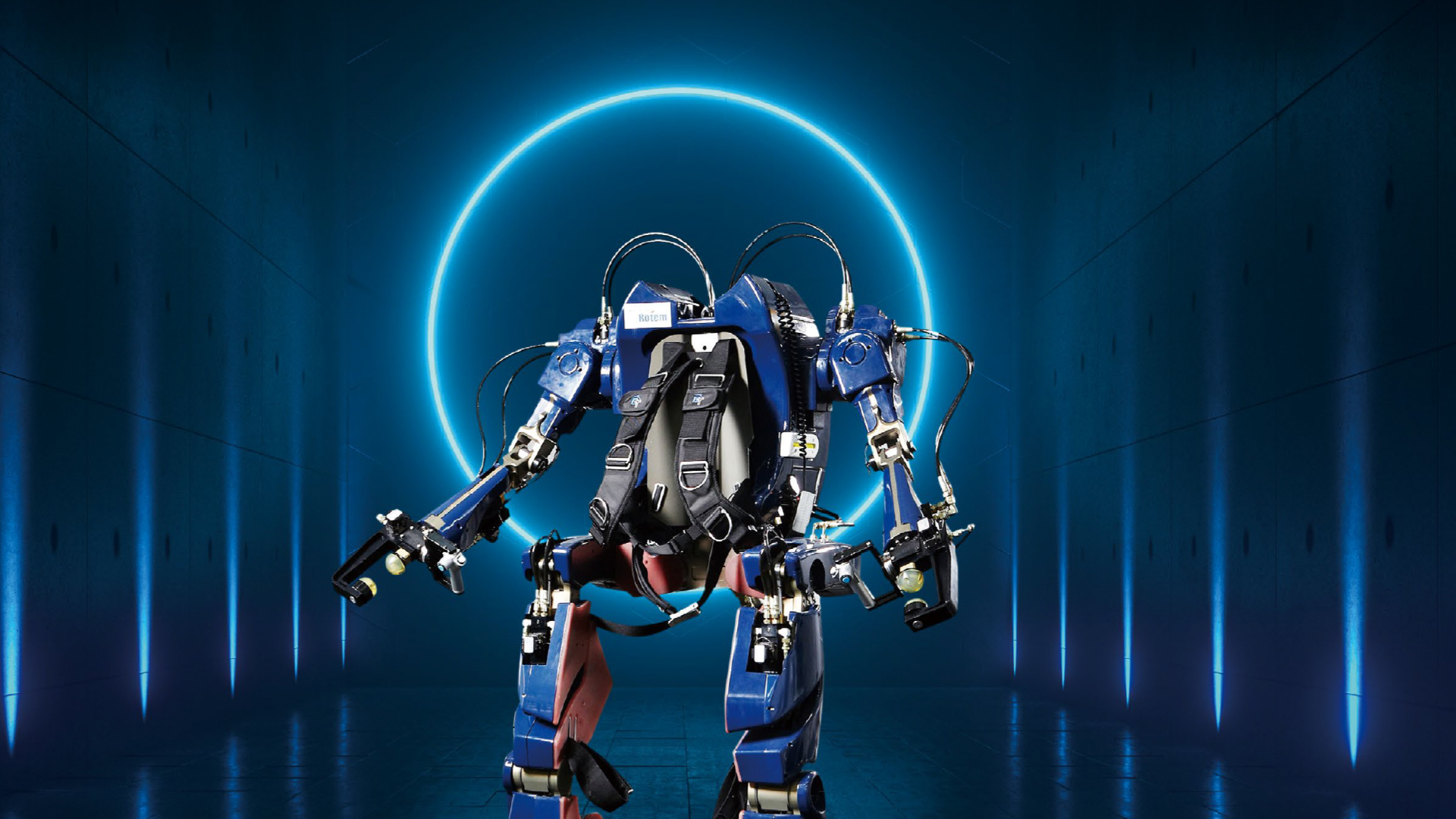
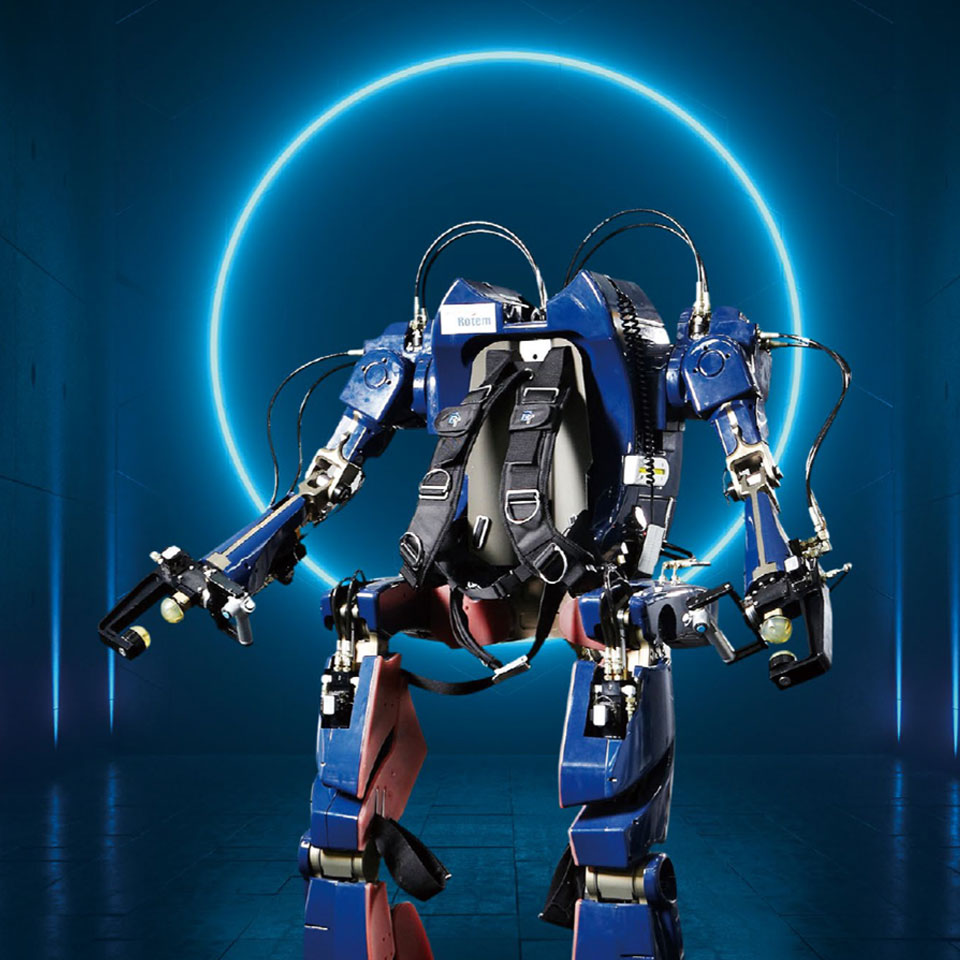
Lifestyle Innovation Brought by Robots
2022.01.17 10min read